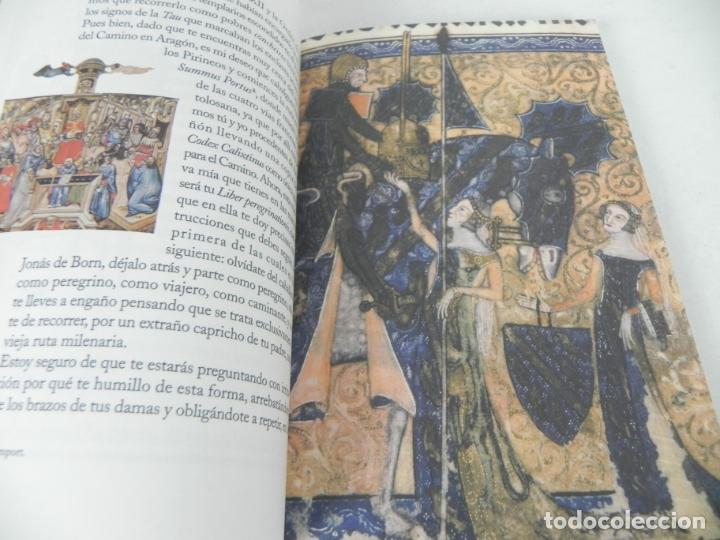

James in Poland justifies the conclusion that Poland currently belongs to Camino-related leaders not only in Central Europe but in the world. James’s parishes and fraternities, as well as numerous religious, cultural, tourist and sporting initiatives relating to St. An analysis of the concentration of Polish sections of the Camino de Santiago and the cult of St. James, which together form the Camino de Santiago network of more than 6,100 km. James’s Trails in Poland, resulting (as at 1 January 2017) in 34 marked Polish sections of the Way of St. This initiated the spectacular development of St. This route was marked in the period of 2004-2005 and it was officially opened on 24 July 2005 as the first Polish section of the Camino de Santiago. James, which runs from Głogów through Jakubów to Zgorzelec (164 km). James in Lower Silesia and the Głogów Region came up with an idea of marking the so-called Lower Silesian Way of St. Regardless of the Camino Polaco project, Camino pilgrims and worshippers of St. However, it has taken another several years to complete this undertaking. The project involved the marking out of the Polish Way (Camino Polaco), going from Ogrodniki (near the border between Poland and Lithuania) through Olsztyn, Toruń, Gniezno and Poznań to the border between Poland and Germany in Słubice. James in Poland on the Internet forum of the “Camino de Santiago Polish Club”. James’s Trail and pilgrims from Poland who went on pilgrimages to Santiago de Compostela put forward an idea of marking out the first section of the Way of St. In the following year, a group of enthusiasts of St. In 2003, the European network of the Camino de Santiago (Ecumenical Pilgrims’ Path “Via Regia”) reached the border between Germany and Poland in Görlitz/Zgorzelec, providing an important stimulus for the commencement of works on marking out the Way of St. Published in "Almatourism - Journal of Tourism, Culture and Territorial Development", Vol 8, No 16 (2017), pp. The center of the Conques cult was – and remains – the Majesty of Sainte Foy, a reliquary statue in which the power (virtus/dynamis) of the saint’s relics is concentrated.

Furthermore, through the reading of the accounts of miracle stories, we can analyze the healing ritual practices, the miraculous dimension of this cult and the Sainte’s ability to treat diseases.


As a matter of fact, through the descriptions of the pilgrims, their gestures, their aspects, their words, their ritual practices by the tomb, their rich or poor offerings, we can analyze the dimension of the Medieval pilgrimage as a specific case study, which can help us describe the idea of pilgrimage in Medieval West Europe and specifically in this sanctuary. The Liber allows us to analyze the anthropological and religious dimension of the pilgrims and their pilgrimage. The Liber miraculorum Sancte Fidis, written during the XI century, partially by Bernard of Angers, describes miracles, healings and rituals practiced in the sanctuary of Sainte Foy at Conques, martyr of the beginning of the IV century. En ambos géneros literarios abordados se constata una serie de procesos socioculturales que los autores cifran bajo el concepto genérico de “cambio del paradigma”, en referencia al paradigma medieval del peregrinaje, cuyo objetivo principal tenía carácter teocéntrico, hacia lo que denominan “el paradigma postmoderno”, en el que la motivación principal del sujeto que emprende el viaje tiene carácter más bien “antropocéntrico”, en el sentido de la búsqueda de uno mismo a la vez que de un “misterio” y un sentido transcendente pero sin que este se pueda enmarcar dentro de un sistema religioso determinado. En segundo lugar se constata una amplia presencia del motivo del Camino de Santiago en la literatura infantil y juvenil de ficción en tales autores y obras como: El verdugo de Dios de Toti Martínez de Leza La cripta del apóstol de Pere Tobarueda i Martínez El alma de las piedras de Paloma Sánchez Garnica o Peregrinatio de Matilde Asensio. Meine Reise auf dem Jokobsweg de Hape Kerkeling. En primer lugar se analizan las obras de tipo autobiográfico de tales autores y obras como Prier pour nous À Compostelle de Pierre Barret y Jean-Noel Gurgand De omweg naar Santiago de Cees Nootboom Nunca llegaré a Santiago de Gregorio Morán o Ich bin dan mal weg. En esta publicación se lleva a cabo un análisis del fenómeno del Camino de Santiago desde la perspectiva de la producción literaria surgida en las últimas décadas.


 0 kommentar(er)
0 kommentar(er)
